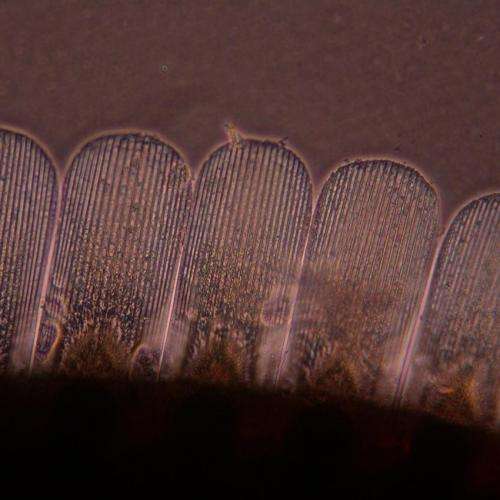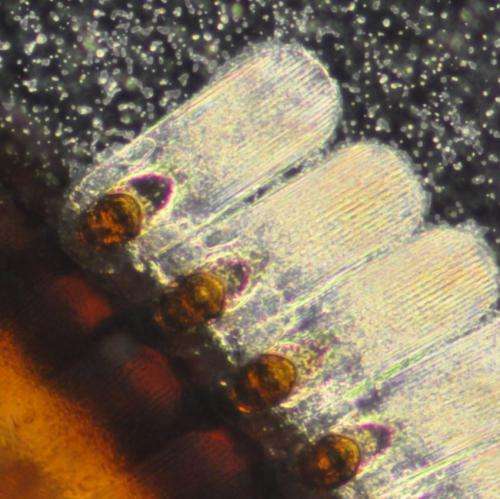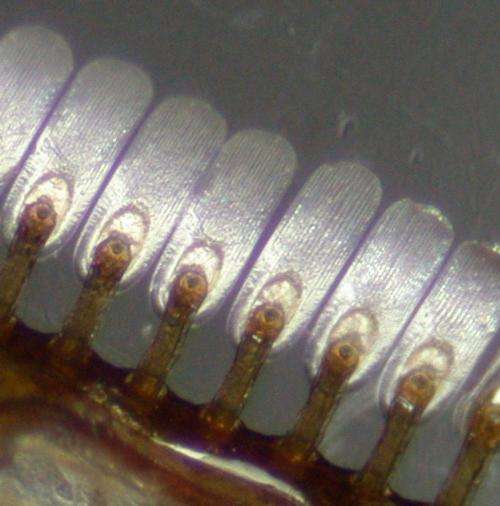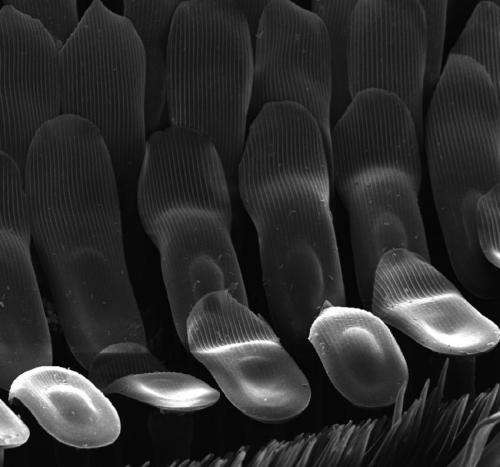June 11, 2014 report
Researchers find suction-cup-shaped circular bristles give male diving beetles a mating advantage

(Phys.org) —A team of researchers working in Taiwan has found that certain types of diving beetles have a mechanical advantage over other less evolved types of diving beetles. In their paper published in Journal of the Royal Society Interface, the team describes how they compared the suction-cup type bristle gripper mechanisms used by males of one type of beetle to latch onto females, with the less evolved spatula type gripper and found the former to be a much better approach than the latter.
To mate, male diving beetles use specialized hairs or bristles on their bodies to latch onto a part of the forewing of the female. Latching on is important because the female moves around a lot, making copulation difficult. In this study, the research team looked to compare the latching abilities of four types of diving beetles—three that have what are described as suction-cup shaped bristles and a fourth which have what are believed to be older, less evolved spatula shaped bristles.
Studying the gripping techniques of diving beetles helps researchers understand the complex mating behavior of the beetles—prior research has shown that the females appear to be evolving in a way that makes it more difficult for males to latch on, forcing the males to develop better mechanisms.
To find out which type of mechanical mechanism is superior, the researchers clipped samples from both types of beetles and allowed both to latch onto glass cover slips in their lab. They then used a scale to measure vertical suction strength and sensors to measure shearing force. In so doing they found the two approaches yielded approximately the same suction force. When factoring for body size however, the suction-cup mechanism proved to be the superior gripper—it also proved to be better at resisting shearing forces, which likely is just as important, as the females tend to twist and turn at times during mating, possibly as a means of warding off weaker suitors.

The findings by the team suggest that the suction-cup type approach is an improvement over the older spatula type gripper and gives males an advantage during copulation. It also provides new ideas for engineers working on the development of underwater attachment devices.


More information: Paper: rsif.royalsocietypublishing.or … .1098/rsif.2014.0273
Journal information: Journal of the Royal Society Interface
© 2014 Phys.org



















